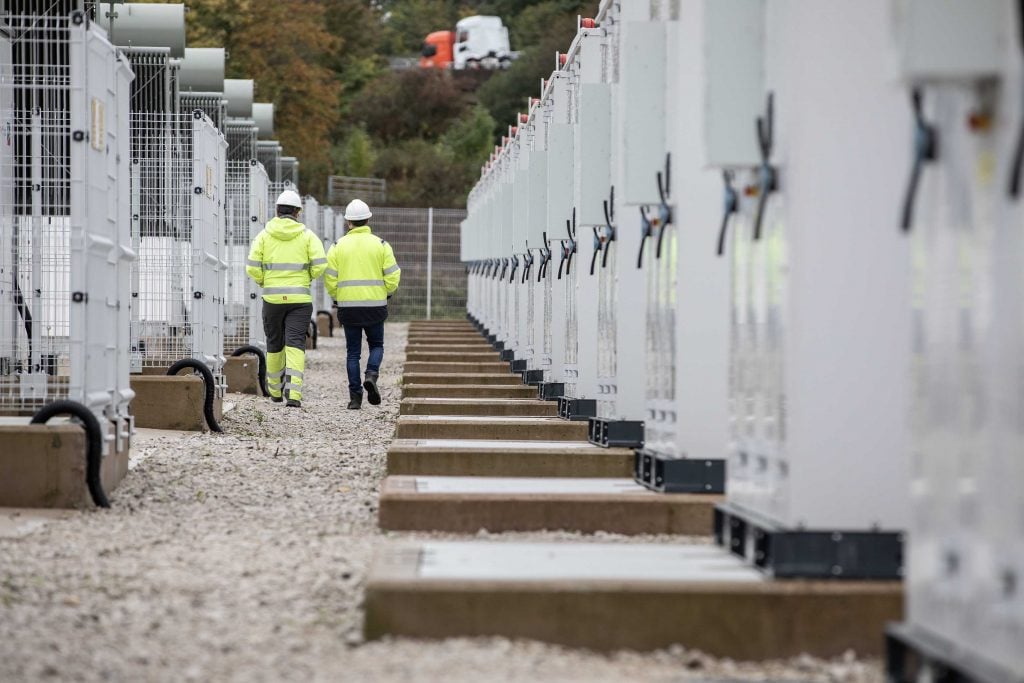A trusted optimization partner is essential for managing complex Routes to Market (RtM). An experienced partner provides tailor-made solutions to stay abreast of BESS technology and regulations. EDF, a leading RtM provider, uses market expertise and advanced algorithms to help asset owners maximize revenue and protect the life of assets.
Optimization strategies
Batteries can be monetized across numerous markets and contractual obligations. Some are determined well in advance of ‘delivery’, some shortly before, and others in real time. These include long-term contracts, wholesale trading and balancing mechanisms (BM) and ancillary services.
It is possible to ‘stack’ several on top of each other, by segmenting the MWs in your battery and using them for different purposes. However, there can be consequences from one income stream to another, and not all combinations are possible. Battery characteristics such as guaranteed cycle limit, BM status and location can significantly change how the strategy can be designed and executed.
Long-term contracts
Long-term contracts are awarded directly by National Grid (NG) and provide a reliable income, but may impact short-term optimization. They typically require a battery to release a certain volume of energy to the grid in specific situations and its activation may or may not be predictable.
While these contracts provide guaranteed revenue, guaranteeing their execution impacts short-term battery optimization – due to their unique state-of-charge requirements. Furthermore, failure to comply with the obligation when invoked will result in fines.
Two common examples are:
- Capacity market (CM):
- Pays either a generating asset to provide an agreed amount of output when needed, or a demand-side participant to reduce its take by an agreed amount when needed.
- The asset may not be called upon and predictions can predict likely calls. The company is paid for its participation in the CM program based on an auction-defined payment for its availability to supply or reduce offtake.
- Black beginning:
- An unusual but important contract used to restart a power station or part of a network business after a failure. Requires a minimum charge level because the event can occur unexpectedly.
- This may affect other market routes and trading opportunities.
Wholesale & BM
Trading is the foundation of any strategy and serves as the main source of income. In their simplest form, batteries can be profitably charged at a cheap price and discharged within the same day at a higher price. Higher efficiency allows trading with smaller spreads compared to other assets.
Although charging and discharging is a simple concept, there are several markets on which volume can be traded:
- Forward Hedging: Less volatile with generally lower spreads, derived from a risk-weighted view with lower certainty. This market is less commonly used by the current national battery fleet, but this is an interesting RtM that EDF is starting to offer its battery customers.
- Day Ahead: Several auctions take place the day before delivery. These are highly liquid and the hourly day-ahead auctions have the most predictable price shape of all within the short horizon.
- Continuous intraday (intraday): a more volatile market that evolves from the day-ahead profile as final positions become clear. The price can be further influenced by expectations about system imbalances.
System imbalance prices (SIP) reflect NG balancing actions through the BM. Increasing production or reducing demand increases prices, while the opposite decreases them. This market is not directly tradable, but non-tradable battery schemes are affected by SIP during the settlement period (SP).
Non-BM batteries can adjust output in real time based on the SIP, which is driven by the Net Imbalance Volume (NIV) – the sum of NG’s balancing actions. The NIV fluctuates during the SP, offering opportunity, but also greater risk compared to previous trading markets. Unlike BM assets, which must adhere to NG’s fixed output rules, non-BM assets can adjust their output in real time.
The BM: Batteries registered with BM can submit bids and offers in the BM, allowing NG to charge or discharge them. These price and volume pairs create opportunities to achieve better intraday spreads after wholesale trading for an SP in delivery ends.
Other adjustments, non-energy costs (NECs) and triads: The costs and benefits for batteries during triads have evolved. In some cases, there may be extremely high charges for charging, but conversely, extremely high returns for discharging during the Triad period. It is critical that any non-trading contracts do not negatively impact your triad position (see Response and Reserve Services).
Additional services
New frequency response services are designed for battery equipment, taking advantage of their fast charging and discharging capabilities to manage grid frequency variations. The three markets – Dynamic Containment, Dynamic Moderation and Dynamic Regulation – offer charging and discharging contracts through daily pay-as-clear auctions for tested batteries.
Dynamic containment requires the least response and dynamic regulation the most, each with different costs and opportunities. Response services can be combined with other market routes, but the effects must be taken into account.
How does everything fit together when building a strategy?
When building a strategy, consider a battery’s capacity, storage limits, and warranty cycle rates. Balancing these factors is critical to maximizing revenue, as every revenue stream affects it. RtM providers build daily strategies for wholesale, BM and ancillary services and adapt on the day of delivery to take advantage of intraday opportunities.
The optimizer determines the best mix and uses auction structures for the best price.
A rapid optimization strategy should take into account the following:
- Wholesale Opportunities: Optimization starts with valuing the day from a wholesale and BM perspective, which differs for BM and non-BM batteries due to BM adjustments and NIV chasing. This assesses the volume generated and consumed every half hour, and the resulting energy price dynamics.
- Impact of the cost status of your additional service contracts.
- The trading space that your additional service contracts allow.
- Consequences of the increases in your contracts.


